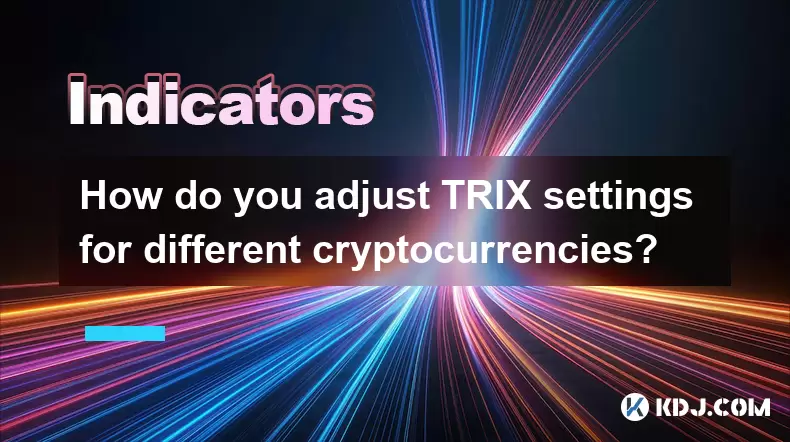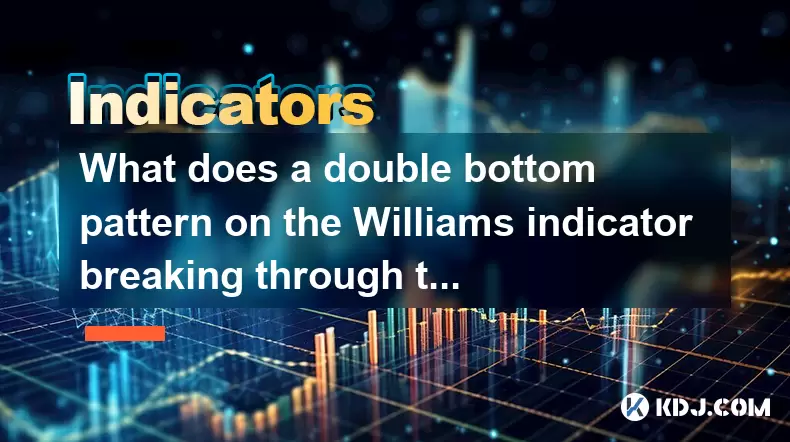-
 Bitcoin
Bitcoin $116400
-0.36% -
 Ethereum
Ethereum $4033
3.40% -
 XRP
XRP $3.302
-1.26% -
 Tether USDt
Tether USDt $1.000
-0.02% -
 BNB
BNB $796.1
1.67% -
 Solana
Solana $177.8
1.89% -
 USDC
USDC $0.9999
0.00% -
 Dogecoin
Dogecoin $0.2314
4.09% -
 TRON
TRON $0.3381
0.14% -
 Cardano
Cardano $0.7989
1.22% -
 Stellar
Stellar $0.4496
-1.84% -
 Chainlink
Chainlink $20.42
9.42% -
 Hyperliquid
Hyperliquid $41.17
0.88% -
 Sui
Sui $3.914
3.77% -
 Bitcoin Cash
Bitcoin Cash $584.7
1.52% -
 Hedera
Hedera $0.2632
-0.54% -
 Avalanche
Avalanche $24.09
3.40% -
 Ethena USDe
Ethena USDe $1.001
-0.02% -
 Litecoin
Litecoin $123.2
1.33% -
 Toncoin
Toncoin $3.318
-0.04% -
 UNUS SED LEO
UNUS SED LEO $8.984
-0.05% -
 Shiba Inu
Shiba Inu $0.00001323
2.85% -
 Uniswap
Uniswap $10.90
4.41% -
 Polkadot
Polkadot $3.999
3.34% -
 Dai
Dai $1.000
0.01% -
 Cronos
Cronos $0.1630
9.64% -
 Bitget Token
Bitget Token $4.484
0.82% -
 Monero
Monero $272.4
2.44% -
 Pepe
Pepe $0.00001173
6.03% -
 Aave
Aave $290.8
2.88%
How do you adjust TRIX settings for different cryptocurrencies?
The TRIX indicator helps crypto traders spot momentum shifts and trend reversals by filtering noise with triple exponential smoothing, but optimal performance requires adjusting period and signal line settings based on volatility, timeframe, and asset type—such as shorter periods for volatile altcoins and longer settings for stable coins like Bitcoin.
Aug 09, 2025 at 07:14 am

Understanding the TRIX Indicator in Cryptocurrency Trading
The TRIX (Triple Exponential Average) indicator is a momentum oscillator used to identify oversold and overbought conditions, as well as potential trend reversals in cryptocurrency markets. It operates by applying a triple exponential moving average (EMA) to price data, which helps filter out minor price fluctuations and highlights significant trends. The resulting oscillator oscillates around a zero line, with values above zero indicating bullish momentum and values below indicating bearish momentum. Because cryptocurrencies exhibit varying levels of volatility and trading volume, adjusting TRIX settings becomes essential to align the indicator with the specific behavior of each digital asset.
Default TRIX Settings and Their Limitations
The default TRIX setting typically uses a 14-period EMA applied three times. While this works well for traditional markets with stable volume and lower volatility, it may not be optimal for cryptocurrencies like Bitcoin (BTC) or Solana (SOL), which experience rapid price swings. For instance, a 14-period TRIX on a 1-hour chart for Ethereum (ETH) might generate too many false signals during high-volatility periods. Traders often find that the default configuration lags behind sudden price movements, reducing its effectiveness in fast-moving crypto markets. This lag stems from the triple smoothing process, which inherently delays signal generation.
Adjusting the Period Length Based on Volatility
To improve responsiveness, traders modify the period length of the TRIX indicator depending on the cryptocurrency’s volatility profile. Highly volatile assets such as Dogecoin (DOGE) or Shiba Inu (SHIB) benefit from shorter periods (e.g., 6 to 9) to capture quick momentum shifts. In contrast, more stable cryptocurrencies like Bitcoin (BTC) or Cardano (ADA) perform better with longer periods (e.g., 18 to 24) to avoid noise. When adjusting the period:
- Access your trading platform’s indicator settings (e.g., TradingView, MetaTrader).
- Locate the TRIX indicator in the studies panel.
- Modify the "Length" or "Period" input field.
- Test values incrementally while observing signal accuracy on historical data.
Shorter periods increase sensitivity, making the TRIX line cross the signal line more frequently. Longer periods smooth out the output, reducing false entries but potentially missing early trend changes.
Customizing the Signal Line for Smoother Outputs
The TRIX indicator includes a signal line, usually a 9-period EMA of the TRIX line itself, used to generate buy/sell signals when crossovers occur. For cryptocurrencies with erratic price action, adjusting the signal line period can refine trade timing. For example:
- Use a 5-period signal line for aggressive strategies on altcoins like Avalanche (AVAX).
- Apply a 12-period signal line for conservative entries on Litecoin (LTC).
To change the signal line:
- Open the TRIX configuration window.
- Find the "Signal Smoothing" or "Signal Period" parameter.
- Input the desired value based on your trading style.
- Compare the new signal behavior against past price action to assess reliability.
A shorter signal line reacts faster to TRIX line changes, increasing trade frequency. A longer signal line filters out minor crossovers, favoring stronger momentum confirmations.
Applying TRIX Across Different Timeframes
The effectiveness of TRIX settings varies significantly with the chart timeframe. Day traders focusing on Binance Coin (BNB) might use a 5-period TRIX on a 15-minute chart for rapid signals. Swing traders analyzing Polkadot (DOT) could apply a 20-period TRIX on a daily chart to capture broader trends. Key considerations include:
- On 1-minute to 15-minute charts, reduce the TRIX period to 5–8 for responsiveness.
- On 1-hour to 4-hour charts, use periods between 10 and 15 for balanced filtering.
- On daily charts, extend the period to 18–26 to align with macro trends.
Each timeframe demands backtesting to determine optimal settings. For instance, a 10-period TRIX on Chainlink (LINK)’s 4-hour chart may yield better results than a 14-period setup during consolidation phases.
Combining TRIX with Volume and Other Indicators
To enhance accuracy, traders often combine TRIX with volume indicators or complementary oscillators. For high-market-cap cryptos like Bitcoin, pairing TRIX with On-Balance Volume (OBV) helps confirm momentum strength. When the TRIX line crosses above zero and OBV is rising, it reinforces bullish sentiment. Similarly, integrating RSI or MACD can filter false signals:
- Add RSI to check if the market is overbought (>70) or oversold (<30) when TRIX generates a signal.
- Use MACD histogram to validate momentum direction before acting on TRIX crossovers.
- Apply volume-weighted moving averages to assess whether price moves are supported by trading activity.
This multi-indicator approach reduces reliance on a single signal source, especially critical in crypto markets prone to manipulation and sudden pumps.
Frequently Asked Questions
Can TRIX be used effectively on low-cap cryptocurrencies?
Yes, but with caution. Low-cap cryptos often exhibit erratic price behavior and low liquidity, which can distort TRIX signals. It is advisable to increase the period length (e.g., 20–30) to reduce noise and combine TRIX with volume analysis to confirm breakout validity.
How do I know if my TRIX settings are too sensitive?
If the TRIX line generates frequent crossovers with the signal line but most trades result in small losses or quick reversals, the settings are likely too sensitive. Review your trade history and adjust the period upward until signals align more consistently with sustained price moves.
Is TRIX suitable for automated trading bots?
Yes, TRIX can be programmed into trading bots using APIs from platforms like Binance or Bybit. Ensure the bot includes filters such as minimum volume thresholds or price range conditions to prevent execution during false signals triggered by low-liquidity spikes.
Should I use the same TRIX settings across multiple exchanges for the same cryptocurrency?
Not necessarily. Price data can vary slightly between exchanges due to liquidity and trading volume differences. For example, Bitcoin on Kraken might show smoother trends than on a smaller exchange. Re-optimize TRIX settings individually for each exchange to maintain signal accuracy.
Disclaimer:info@kdj.com
The information provided is not trading advice. kdj.com does not assume any responsibility for any investments made based on the information provided in this article. Cryptocurrencies are highly volatile and it is highly recommended that you invest with caution after thorough research!
If you believe that the content used on this website infringes your copyright, please contact us immediately (info@kdj.com) and we will delete it promptly.
- Moat Stocks & Mega-Cap Momentum: July's Standout Performance
- 2025-08-09 12:30:12
- Injective (INJ) Eyes $15.39 Breakout Amidst Explosive Network Growth
- 2025-08-09 12:30:12
- HAT Token Mania: Price Surges, Crypto Auctions, and Meme Coin Mayhem
- 2025-08-09 11:10:11
- Undervalued Cryptos Primed for a 2025 Takeoff: MAGACOIN, TRX, and SUI Lead the Pack
- 2025-08-09 11:10:11
- Bitcoin Goes to Harvard: Ivy League Embraces Digital Assets
- 2025-08-09 10:50:12
- Bitcoin, BlockDAG, and Toncoin: Decoding the Crypto Buzz in NYC
- 2025-08-09 11:30:11
Related knowledge

What does it mean when the Triple Moving Average (TRIX) turns downward but the price doesn't fall?
Aug 09,2025 at 12:42pm
Understanding the Triple Moving Average (TRIX) IndicatorThe Triple Moving Average, commonly known as TRIX, is a momentum oscillator designed to filter...

What does it mean when the Williams' oscillator repeatedly hits bottoms but fails to rebound?
Aug 09,2025 at 09:28am
Understanding the Williams %R OscillatorThe Williams %R oscillator, developed by Larry Williams, is a momentum indicator used in technical analysis to...

What does a double bottom pattern on the Williams indicator breaking through the 50-day midline indicate?
Aug 09,2025 at 10:56am
Understanding the Williams %R IndicatorThe Williams %R indicator, developed by Larry Williams, is a momentum oscillator that measures overbought and o...

What does it mean when the MACD-histogram turns from green to red but the DIF line fails to form a golden cross?
Aug 09,2025 at 10:15am
Understanding the MACD and Its ComponentsThe MACD (Moving Average Convergence Divergence) is a widely used technical analysis tool in the cryptocurren...

When the J line in the KDJ indicator suddenly turns downward after being continuously overbought, does it indicate a top?
Aug 09,2025 at 06:35am
Understanding the KDJ Indicator and Its ComponentsThe KDJ indicator is a momentum oscillator widely used in cryptocurrency technical analysis to ident...

What does it mean when the TRIX indicator suddenly diverges downward after a long period of convergence?
Aug 09,2025 at 12:56am
Understanding the TRIX Indicator in Cryptocurrency TradingThe TRIX indicator, or Triple Exponential Average, is a momentum oscillator used in technica...

What does it mean when the Triple Moving Average (TRIX) turns downward but the price doesn't fall?
Aug 09,2025 at 12:42pm
Understanding the Triple Moving Average (TRIX) IndicatorThe Triple Moving Average, commonly known as TRIX, is a momentum oscillator designed to filter...

What does it mean when the Williams' oscillator repeatedly hits bottoms but fails to rebound?
Aug 09,2025 at 09:28am
Understanding the Williams %R OscillatorThe Williams %R oscillator, developed by Larry Williams, is a momentum indicator used in technical analysis to...

What does a double bottom pattern on the Williams indicator breaking through the 50-day midline indicate?
Aug 09,2025 at 10:56am
Understanding the Williams %R IndicatorThe Williams %R indicator, developed by Larry Williams, is a momentum oscillator that measures overbought and o...

What does it mean when the MACD-histogram turns from green to red but the DIF line fails to form a golden cross?
Aug 09,2025 at 10:15am
Understanding the MACD and Its ComponentsThe MACD (Moving Average Convergence Divergence) is a widely used technical analysis tool in the cryptocurren...

When the J line in the KDJ indicator suddenly turns downward after being continuously overbought, does it indicate a top?
Aug 09,2025 at 06:35am
Understanding the KDJ Indicator and Its ComponentsThe KDJ indicator is a momentum oscillator widely used in cryptocurrency technical analysis to ident...

What does it mean when the TRIX indicator suddenly diverges downward after a long period of convergence?
Aug 09,2025 at 12:56am
Understanding the TRIX Indicator in Cryptocurrency TradingThe TRIX indicator, or Triple Exponential Average, is a momentum oscillator used in technica...
See all articles

























































































